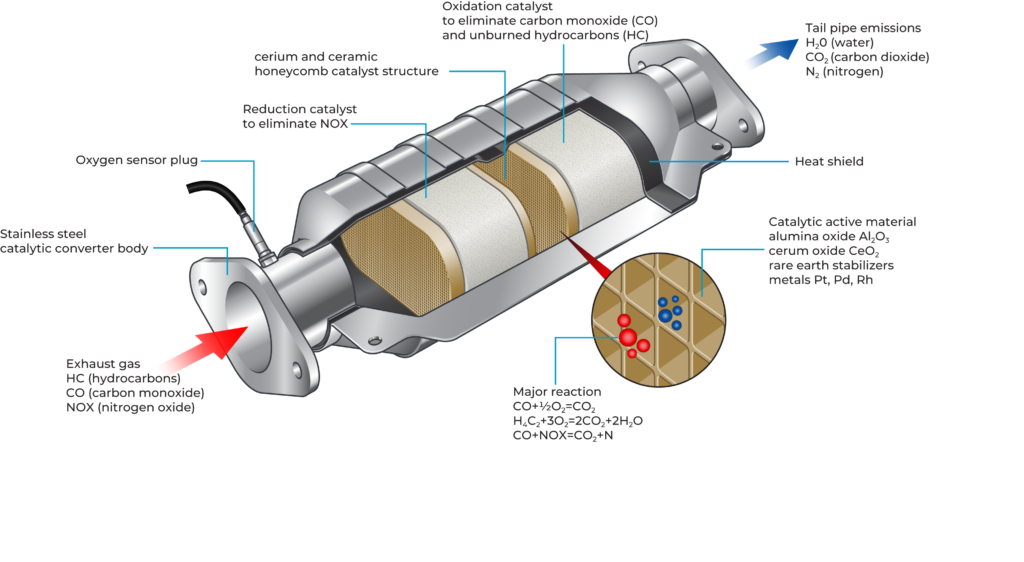Background

The Catalytic System requires a catalytic converter to operate. The catalyst in the converter is fragile and easily susceptible to tamper. Inspectors are required to visually inspect the outside of the catalytic converter and look for signs of tamper. In recent years, catalytic converter theft has been on the rise. Like the EGR Valve, Catalytic Converters restrict exhaust, and are often removed and replaced with a straight pipe, also known as a Downpipe, with no catalytic converter. Doing so produces a more desirable exhaust sound for some drivers, and increases exhaust flow to increase horsepower. However, the trade is hardly worth it, as it causes increased NoX emissions and can trip the Check Engine light.
To determine if the catalytic converter has been tampered with, you will need to determine how many converters are required and what type. This will be determined by make and model of the vehicle. Once this has been determined, you will need to make sure that the catalytic converters are installed properly and functioning. If anything is missing, damaged or disconnected then the catalytic converters cannot be considered working functionally. Remember that catalytic converters only function at “operating temperature,” and models from before 2001 will need to be at operating temperature when tested.
Since the exhaust must flow through the catalytic converters, this part is found in the exhaust system. Most catalytic converters are found under the car in front of the muffler. If you do not find it there, take a look under the hood just below the exhaust manifold. Most catalytic converters have heat shield.
